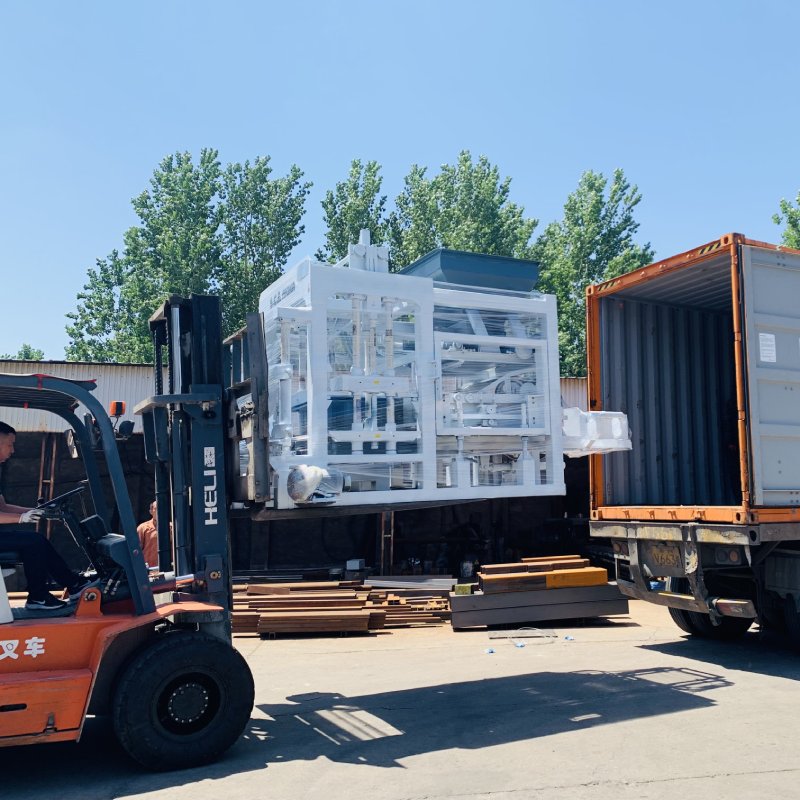
Image source Aiweiblockmachine
Earthquakes pose a significant threat to the safety and stability of structures in seismic zones worldwide. Developing earthquake-proof structures is essential to minimize human casualties and property damage during seismic events. Block making machines have emerged as valuable tools in the construction industry, offering innovative solutions to enhance the seismic resilience of buildings. This article explores the relationship between block making machines and the development of earthquake-proof structures, highlighting their role in seismic design, material selection, and construction techniques.
Seismic Design Principles and Building Codes :
Seismic design principles form the foundation for developing earthquake-proof structures. This section delves into how block making machines contribute to seismic design considerations. The essay discusses the importance of adhering to building codes and regulations specific to seismic zones, which outline requirements for structural strength, ductility, and energy dissipation. It explores how block making machines enable the construction of reinforced masonry structures that can withstand seismic forces. Additionally, the section highlights the integration of seismic design elements, such as shear walls, vertical reinforcement, and proper connections, into block-based construction to enhance structural stability during earthquakes. The essay also emphasizes the significance of seismic analysis and modeling techniques, including finite element analysis or dynamic response simulations, to optimize the design and performance of earthquake-resistant structures.
Selection of Seismic-Resistant Materials:
The choice of materials plays a crucial role in developing earthquake-proof structures. This section examines how block making machines contribute to the selection of seismic-resistant materials. The essay discusses the use of high-strength concrete blocks or reinforced masonry units that possess superior tensile and compressive strength, enhancing the structural integrity of buildings. It explores the potential for incorporating lightweight aggregates or fibers into block production, improving the seismic performance of masonry elements. Additionally, the section highlights the importance of using flexible and ductile materials, such as fiber-reinforced polymers (FRPs) or steel reinforcements, to increase the energy dissipation capacity and deformation resistance of structures. The essay also discusses the significance of quality control measures and material testing to ensure the reliability and consistency of seismic-resistant materials produced by block making machines.
Construction Techniques for Seismic Resilience :
The construction techniques employed during the assembly of structures significantly impact their seismic resilience. This section delves into how block making machines contribute to seismic-resilient construction techniques. The essay discusses the importance of proper mortar selection and application techniques to ensure effective load transfer and bonding between blocks. It explores the potential for using innovative construction methods, such as interlocking blocks or dry stacking systems, which enhance the structural integrity and seismic performance of masonry walls. Additionally, the section highlights the significance of proper reinforcement placement, including horizontal and vertical reinforcement, to strengthen the connections and improve the overall ductility of structures. The essay also emphasizes the role of skilled labor, construction supervision, and quality assurance processes in maintaining construction standards for earthquake-proof buildings.
Testing, Monitoring, and Post-Earthquake Evaluation :
Testing, monitoring, and post-earthquake evaluation are essential aspects of ensuring the effectiveness of earthquake-proof structures. This section explores how block making machines contribute to these processes. The essay discusses the importance of conducting laboratory and field tests on block specimens and masonry assemblies to assess their seismic performance. It explores the potential for using non-destructive testing methods, such as seismic or ultrasonic techniques, to evaluate the condition and integrity of structures before and after earthquakes. Additionally, the section highlights the integration of structural health monitoring systems that capture real-time data on structural behavior, facilitating timely intervention and maintenance. The essay also emphasizes the significance of post-earthquake evaluations and lessons learned to inform future construction practices and improve the seismic resilience of buildings.
Conclusion:
Block making machines play a crucial role in the development of earthquake-proof structures by contributing to seismic design principles, material selection, and construction techniques. By enabling the use of seismic-resistant materials, employing proper construction methods, and facilitating testing and monitoring processes, these machines enhance the seismic resilience of buildings in earthquake-prone areas. It is imperative for industry stakeholders, researchers, and policymakers to collaborate and leverage the potential of block making machines to develop innovative solutions for earthquake-proof construction. Through continuous advancements and knowledge sharing, we can create safer and more resilient built environments that protect lives and preserve infrastructure in seismic zones.
Factors to consider when buying a hopper dryer
Here are the key things you should know when buying hopper dryers:
- Hopper dryer capacity: This refers to the volume of the plastic material that the dryer can handle at a time. The capacity that you choose should match your production needs. Whether it is a 25kg hopper dryer or 1000kg, you should specify.
- Temperature range: This is the maximum temperature that you can choose on the hopper dryer. Some dryers have low range while others have a high-temperature range.
- Speed: How long will it take for the dryer to completely dry the plastic material? Check out the estimated drying time of the equipment.
- Design and style: You should choose a hopper dryer that has sleek design and modern style. For example, its control panel should allow you to perform an array of functions.
- Performance and efficiency: The hopper dryer should be able to deliver excellent performance when it comes to drying plastic material. The equipment should also be energy-efficient such that you won’t have to pay high energy bills.
Choose reliable hopper dryer manufacturer in China
Where you buy a hopper dryer will always matter. If you are planning to buy a hopper dryer in China, ensure that it is from a reputable source. This is where comes in. We are a known manufacturer of quality hopper dryers in China.
Other than the quality equipment, we also have excellent customer support. All you need is to analyze your production and we will help you get the right hopper dryer.
